With just a handful of ingredients and a little patience, this Russian cured salmon turns into a silky, flavorful Passover staple!
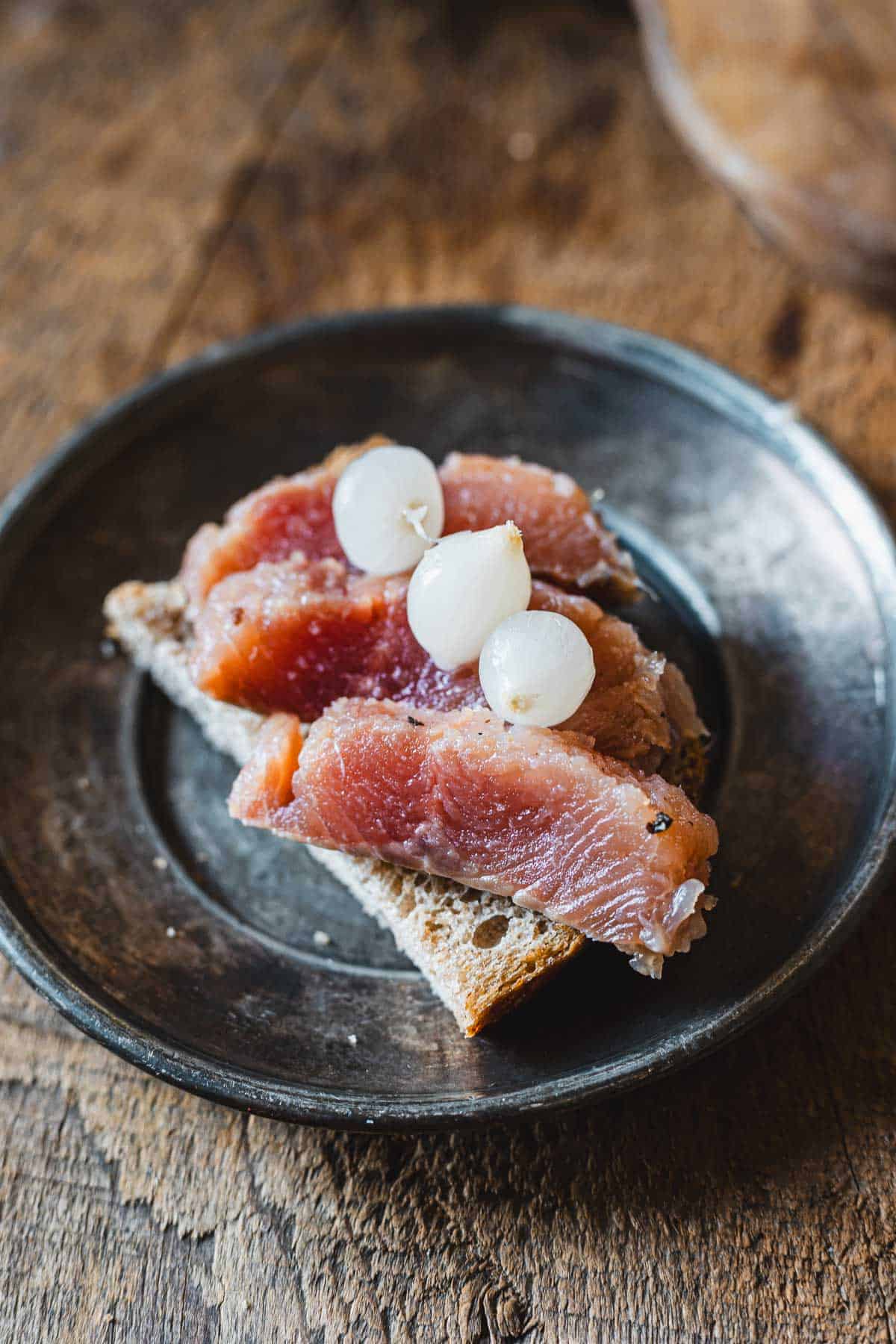
Passover always sneaks up on me. One minute, it’s just a vague date in the distance, and the next, I’m scrubbing countertops, switching dishes, and making lists of everything that needs to be prepared. The house hums with anticipation— the kind that comes from knowing we’re about to press pause on the everyday and step into something older, something deeply familiar.
Among the many dishes that define this time of year, there’s one I always come back to: my grandmother’s salted salmon. I don’t remember the first time I tasted it, but I remember watching her make it. I’d come home from high school, exhausted from whatever teenage dramas had filled my day, and drop my bag by the door. She’d already be at the kitchen counter, fully in the zone, hands moving with practiced ease.
For five minutes, she wouldn’t speak. Just salt and sugar, press, wrap. A sprinkle of sugar, a scatter of bay leaves, a knowing nod as she turned the fish just so. I’d sit at the table, chin resting on my hands, watching. Not asking questions, not interrupting. Just breathing in the moment, the ritual, the quiet magic of it all. In a house that was always filled with movement and voices, this was one of the few times everything felt still.
She had her own beliefs about Passover, ones she never wrote down but wove into every dish she made. For her, the holiday wasn’t just about what we couldn’t eat—it was about what we could. The ingredients that took center stage, the ones that didn’t need flour or leavening to be special. The ones that, with just a little time and care, became something remarkable. And salmon gravlax? That was one of those things.
A Table Set with Tradition
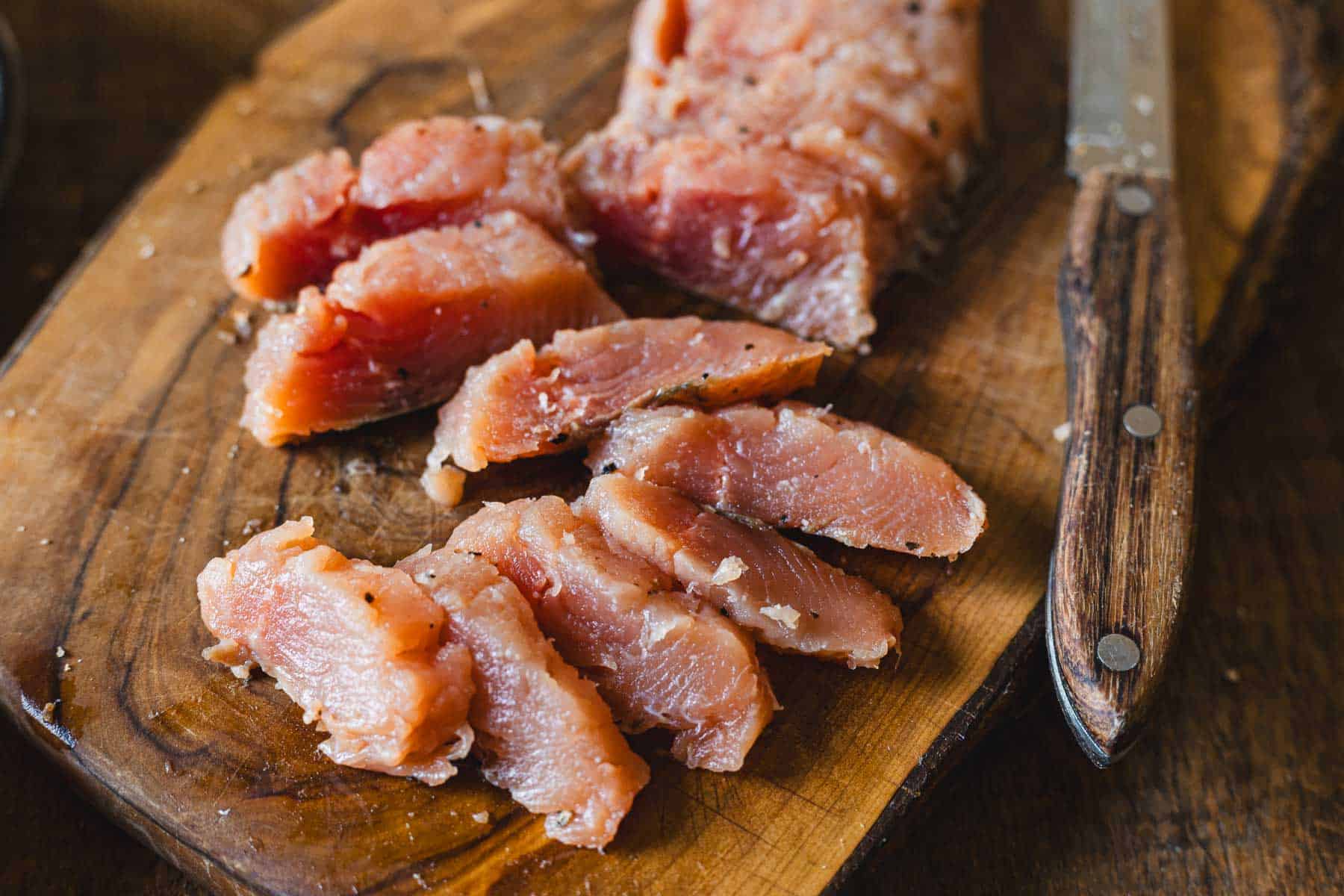
This low-salt salmon gravlax ("malosol'niy losos'") was a staple on our Passover table, appearing in different ways throughout the week. Sometimes cold and silky, paired with sharp horseradish or a squeeze of lemon. Other times, it is diced into salads or layered onto matzo with a swipe of something creamy (usually, alongside chopped liver).
And always, on the first night, there was homemade gefilte fish, which tooks days to make. And it wouldn't be Passover without the fresh matzo. The store-bought kind was fine for the rest of the week, but my grandmother insisted that the first night deserved something better. I can still see the way she rolled out the dough, pressing it thinner than I thought possible, moving quickly to keep it from rising. The smell of it baking, toasty and warm, filling the kitchen as she worked.
The next morning, when the excitement of the Seder had settled, there would be matzo brei. My grandmother’s was simple, just eggs and matzo softened in water, fried until golden in a well-loved pan. I used to joke that it was the one time of year she let breakfast be messy—crumbs on the table, bits of egg sticking to our forks. But she’d just shake her head and smile, saying that Passover had its own rules, its own way of making the ordinary feel different.
Even now, it’s a tradition I carry forward. You’ll probably see more salmon in the coming weeks, woven into different recipes, different stories. But this cured salmon? It’s the one that brings me back. To quiet afternoons at the kitchen table. The feeling of knowing, even if I wasn’t hungry, that there would always be something waiting for me. To the belief that some things, with time and patience, would become something better.
Ingredients
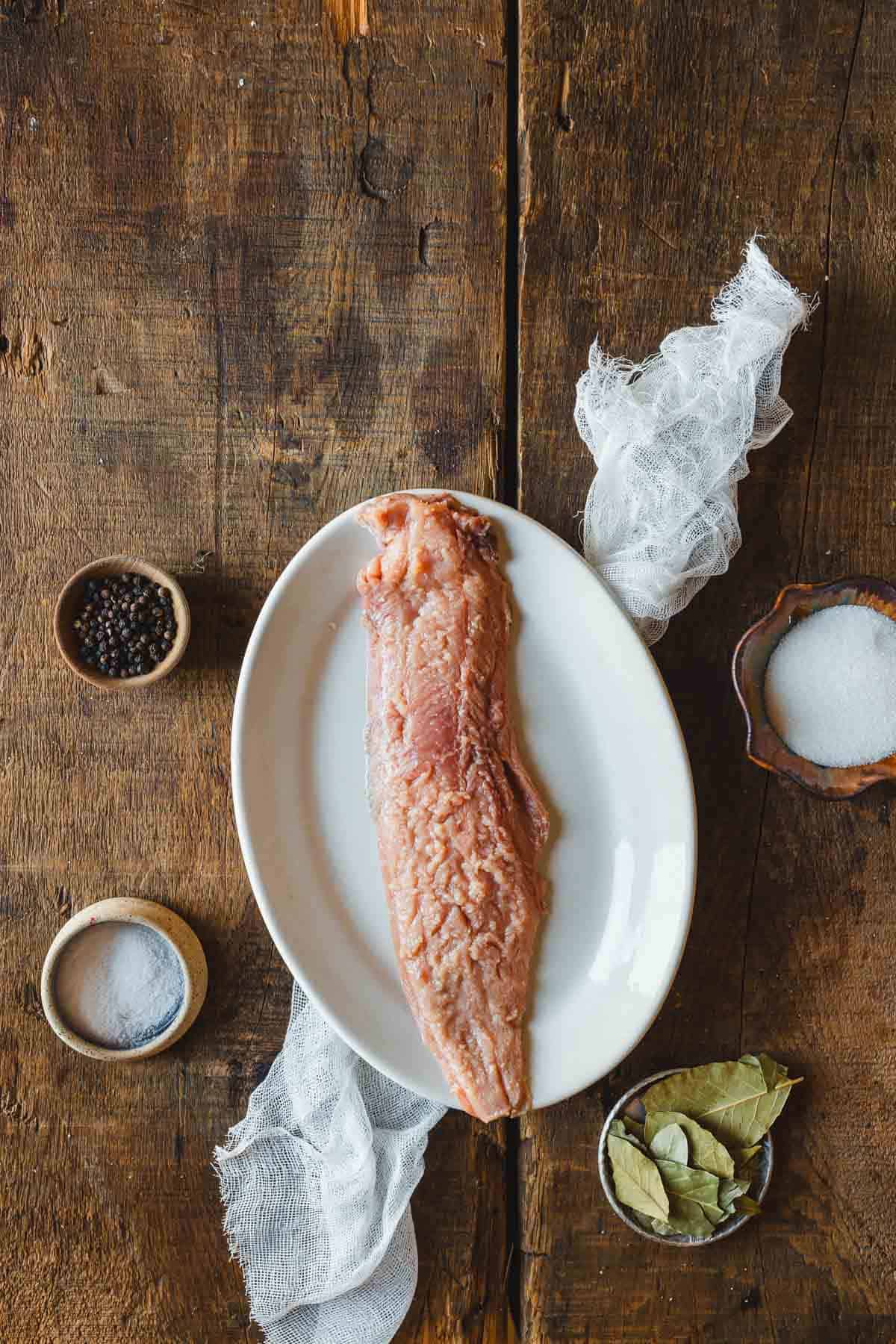
- Fresh Salmon - A high quality salmon makes all the difference here, as the curing process enhances its natural richness rather than masking imperfections. If wild-caught salmon is available, use it. If not, a fatty high-quality farmed salmon works well.
- Rock Salt - This is essential for drawing out moisture and firming up the texture of the salmon. Kosher salt works as a substitute, but avoid table salt, it’s too fine and can make the fish overly salty.
- Sugar - Just enough to balance the salt mixture and enhance the salmon’s natural sweetness. Some recipes use honey or maple syrup, but she always stuck to sugar, believing it gave a cleaner salt cure.
- Bay Leaves - A small but crucial touch. Bay leaves add a gentle herbal note that deepens as the salmon cures. Don’t skip this—it’s part of what gives this cured salmon its distinct flavor.
- Whole Peppercorns - For a subtle warmth that lingers in the background. Cracking them slightly before adding them allows their flavor to seep in more effectively. Black peppercorns are traditional, but white or pink can be used for a milder spice.
See the recipe card for full list and exact quantities.
How to Make This Russian Cured Salmon Recipe

This simple method transforms a fresh gravlax recipe into something rich, silky, and deeply flavorful with just a handful of ingredients. The key is patience, time does most of the work, just as my grandmother always said. Here's how to make this recipe:
Prepare the Cure
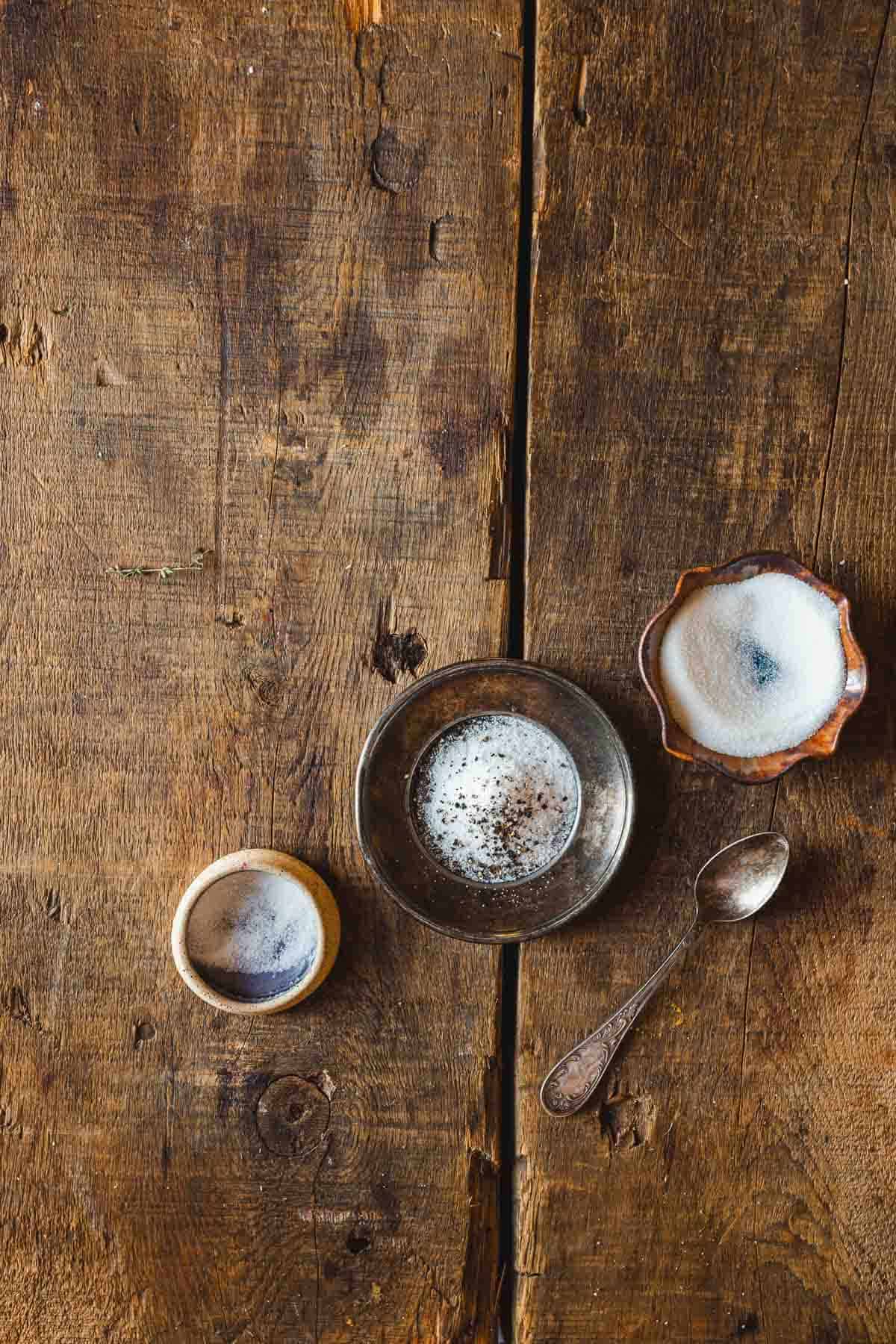

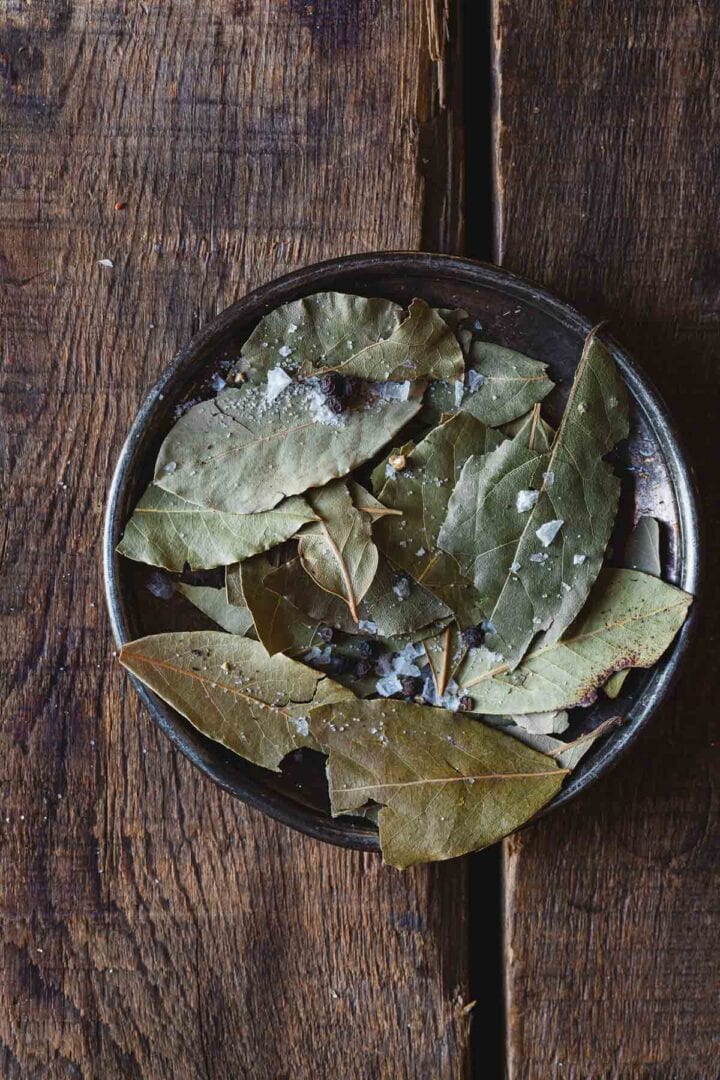
In a small bowl, mix the rock salt, sugar, crushed bay leaves, and lightly cracked peppercorns. This blend will draw out moisture and infuse the fish with subtle herbal and peppery notes.
Line the Baking Sheet
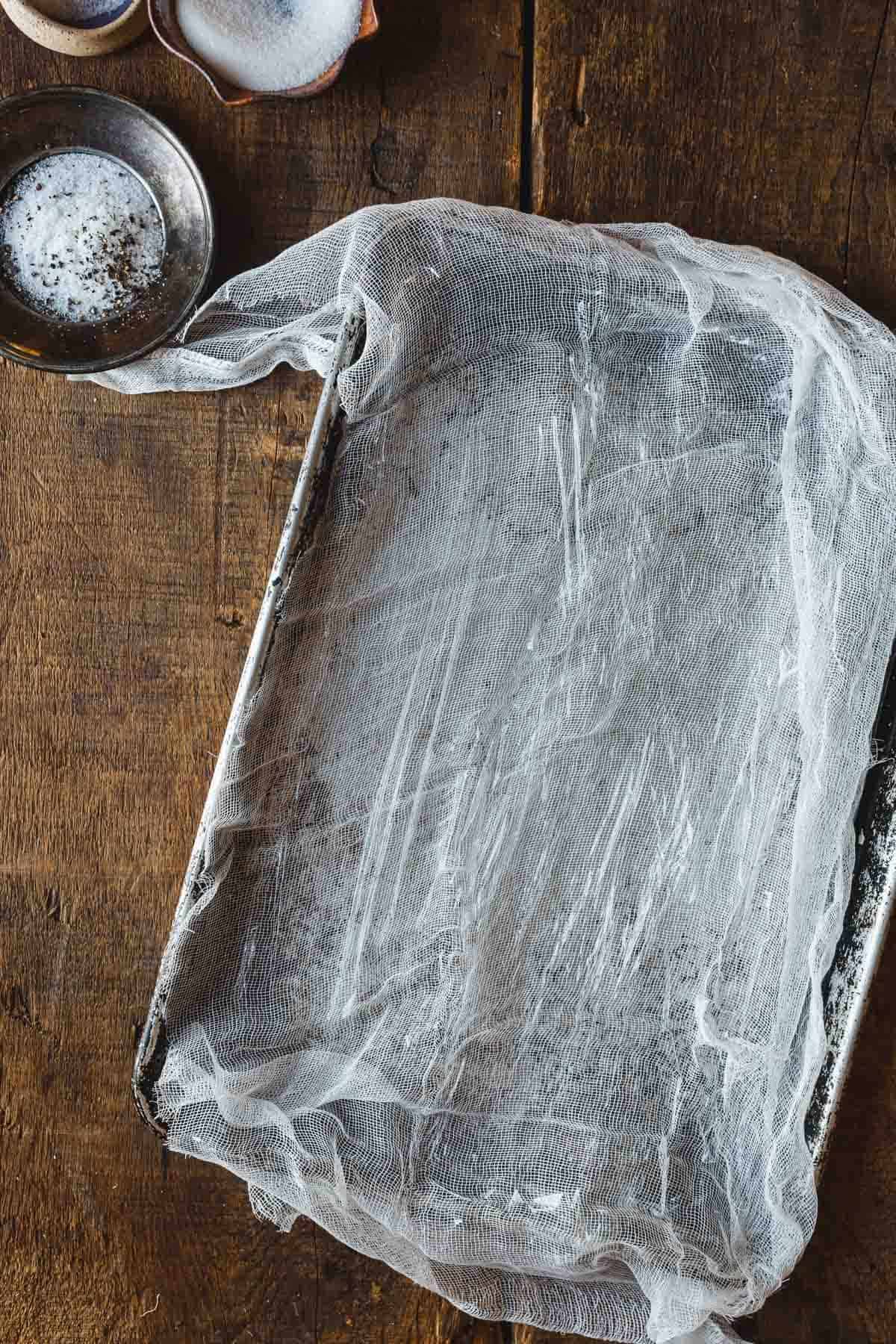
Lay a large piece of cheesecloth over a baking sheet. It helps the fish breathe as it cures and makes it easy to wrap up tightly.
Coat the Salmon
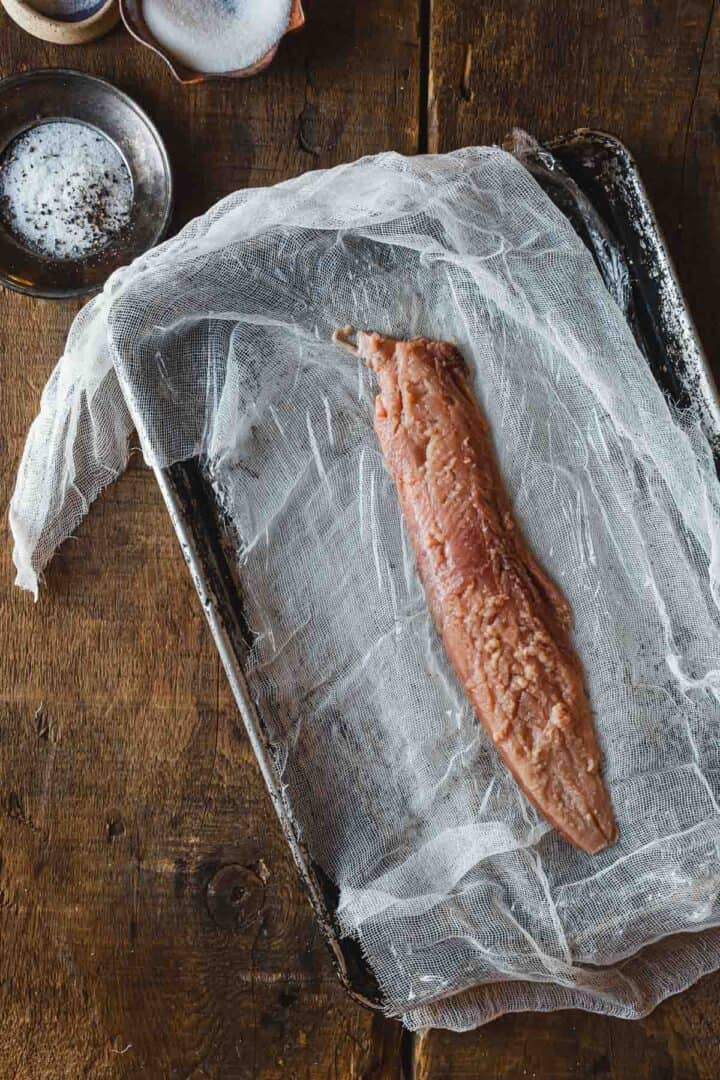

Place the salmon fillet skin-side down on the cheesecloth. Evenly rub the salt mixture over every surface of the fish, making sure to press it in gently. This is where the magic begins—the salt will start pulling out moisture, creating a firm yet silky texture.
Wrap and Weigh Down
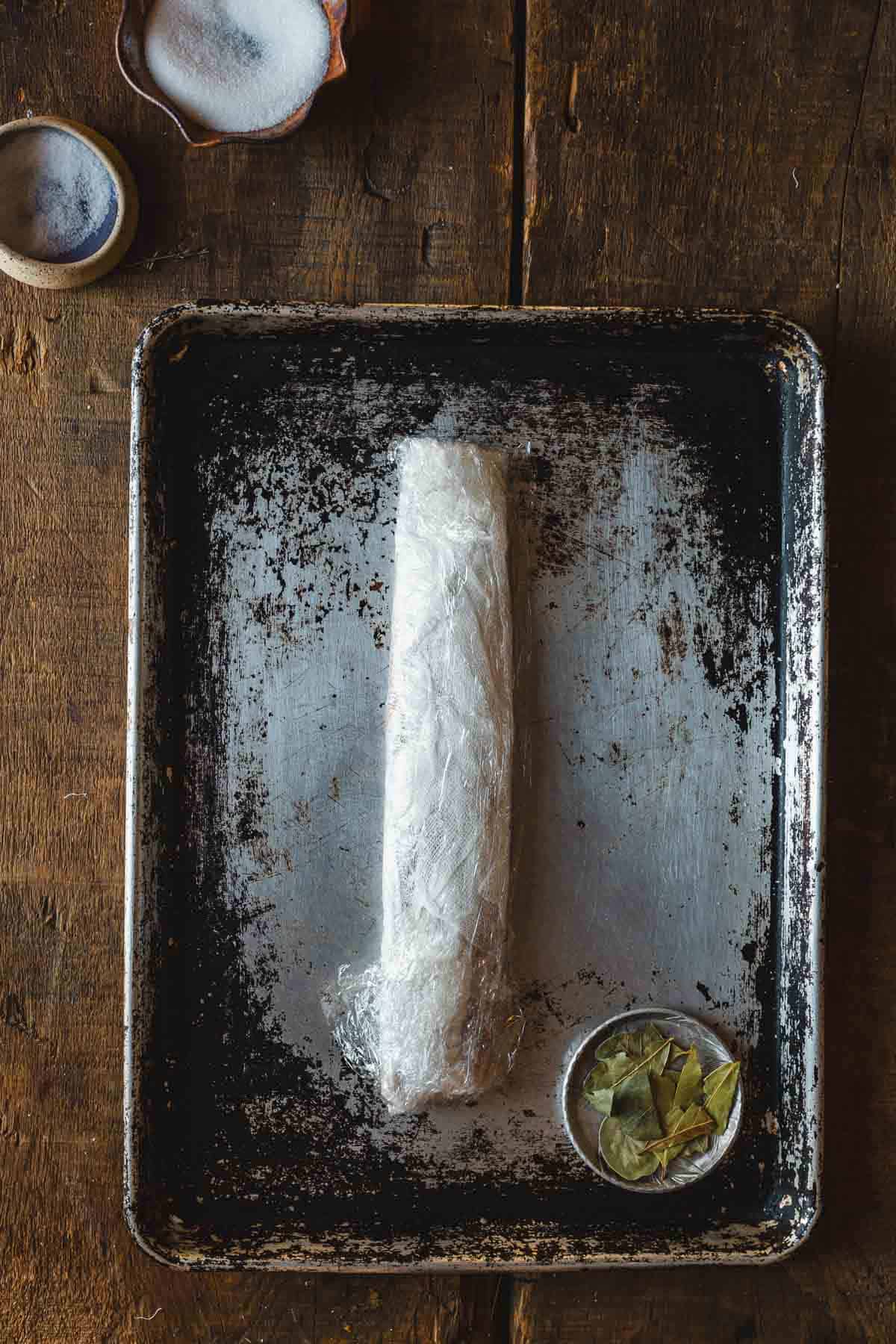
Fold the cheesecloth tightly around the salmon, securing it like a little package. Place a small weight on top—a plate, a can, or anything with gentle pressure—to help the cure work evenly.
Cure in the Refrigerator
Transfer the wrapped salmon to the refrigerator and let it cure for 48 hours. Every 12 hours, check for any liquid that has collected and carefully drain it off.
Unwrap and Rinse
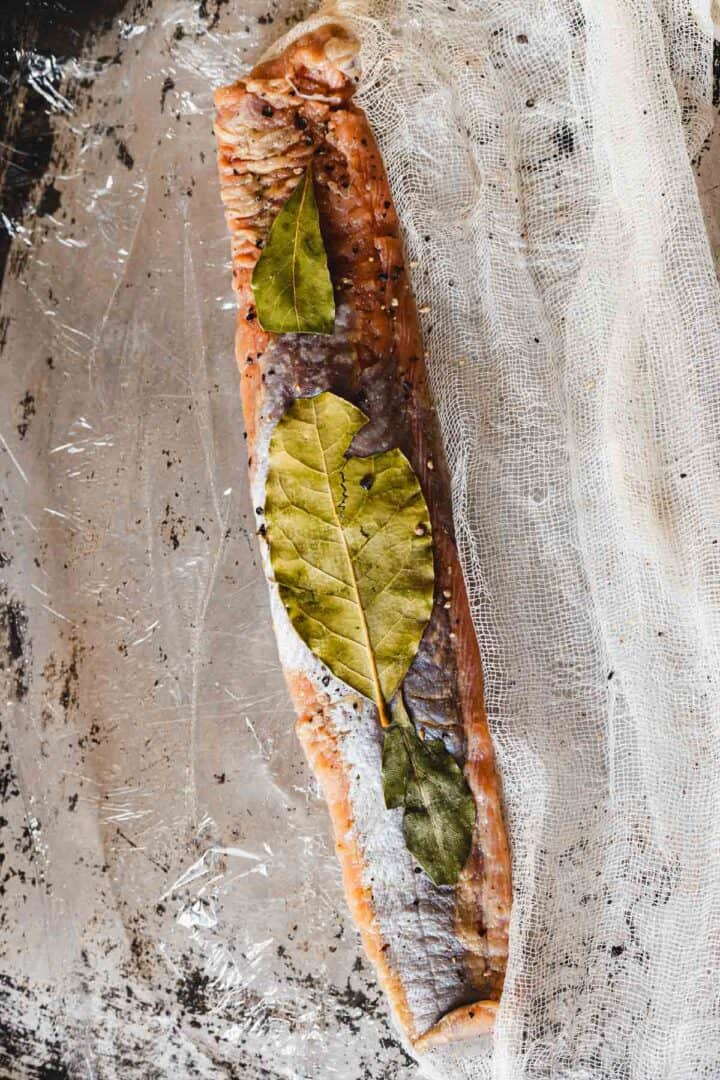
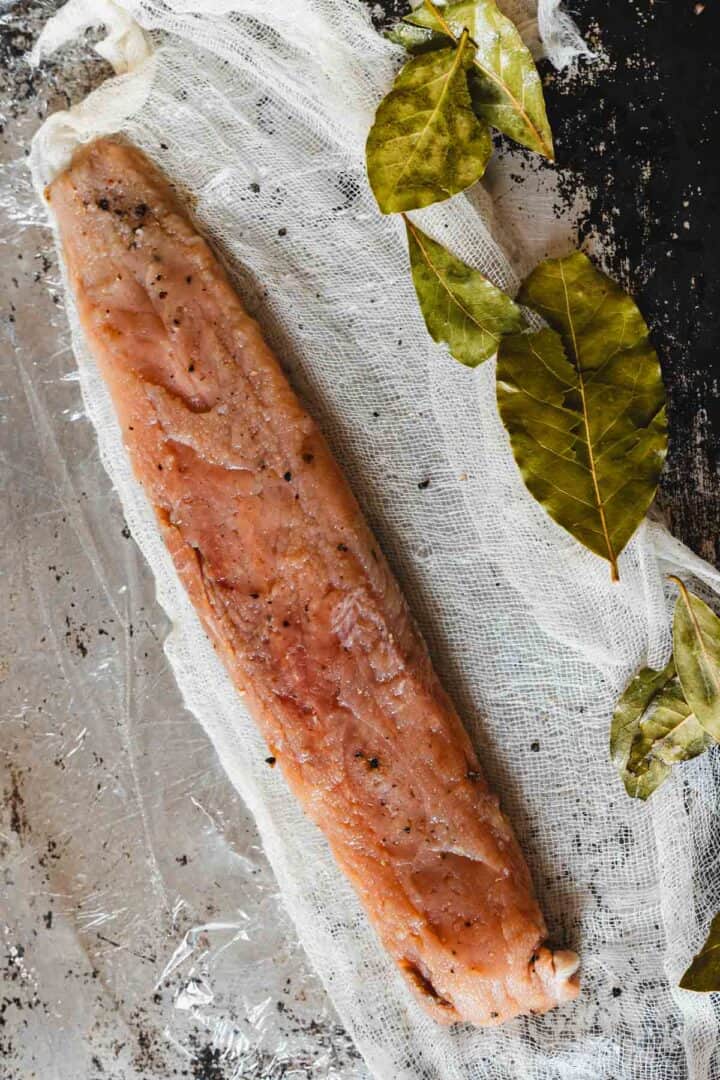
After two days, unwrap the salted salmon and rinse it under cold water to remove any excess salt. Pat it dry thoroughly with paper towels.
Slice Thinly
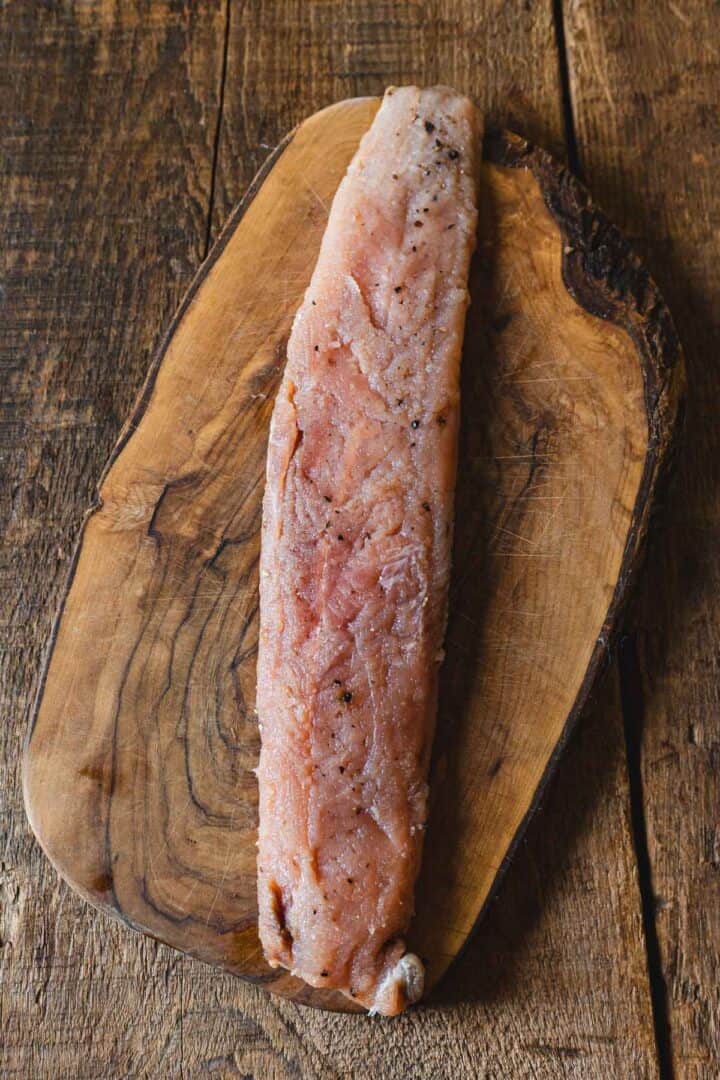
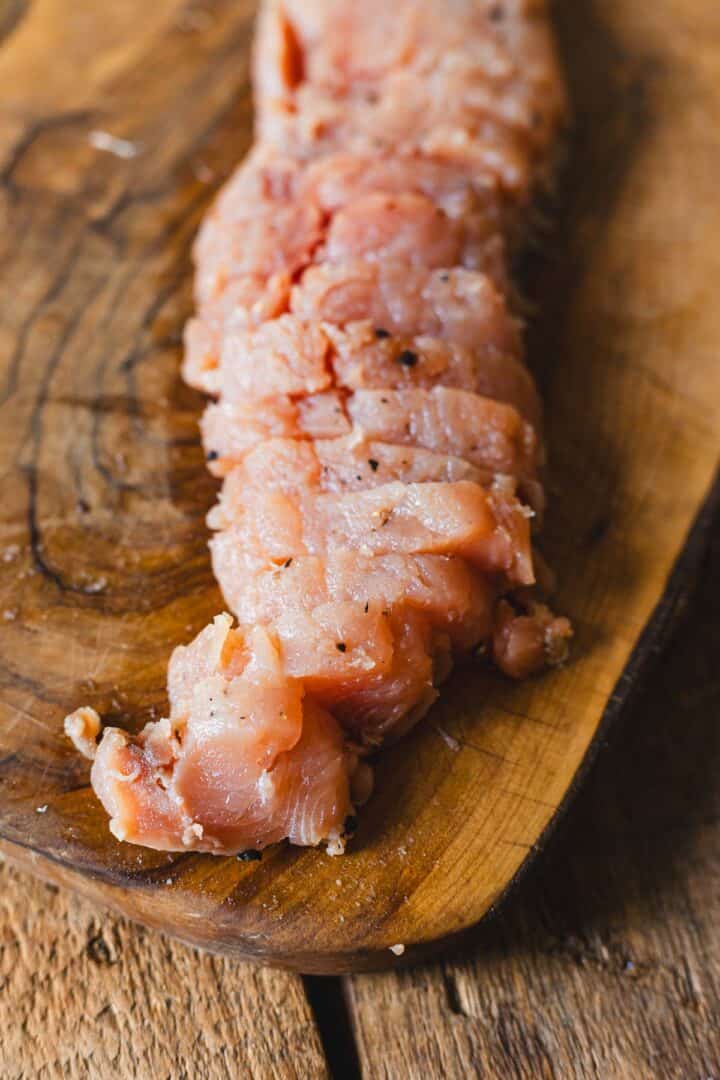
Use a sharp knife to thinly slice the salmon at an angle.
Serve and Enjoy!
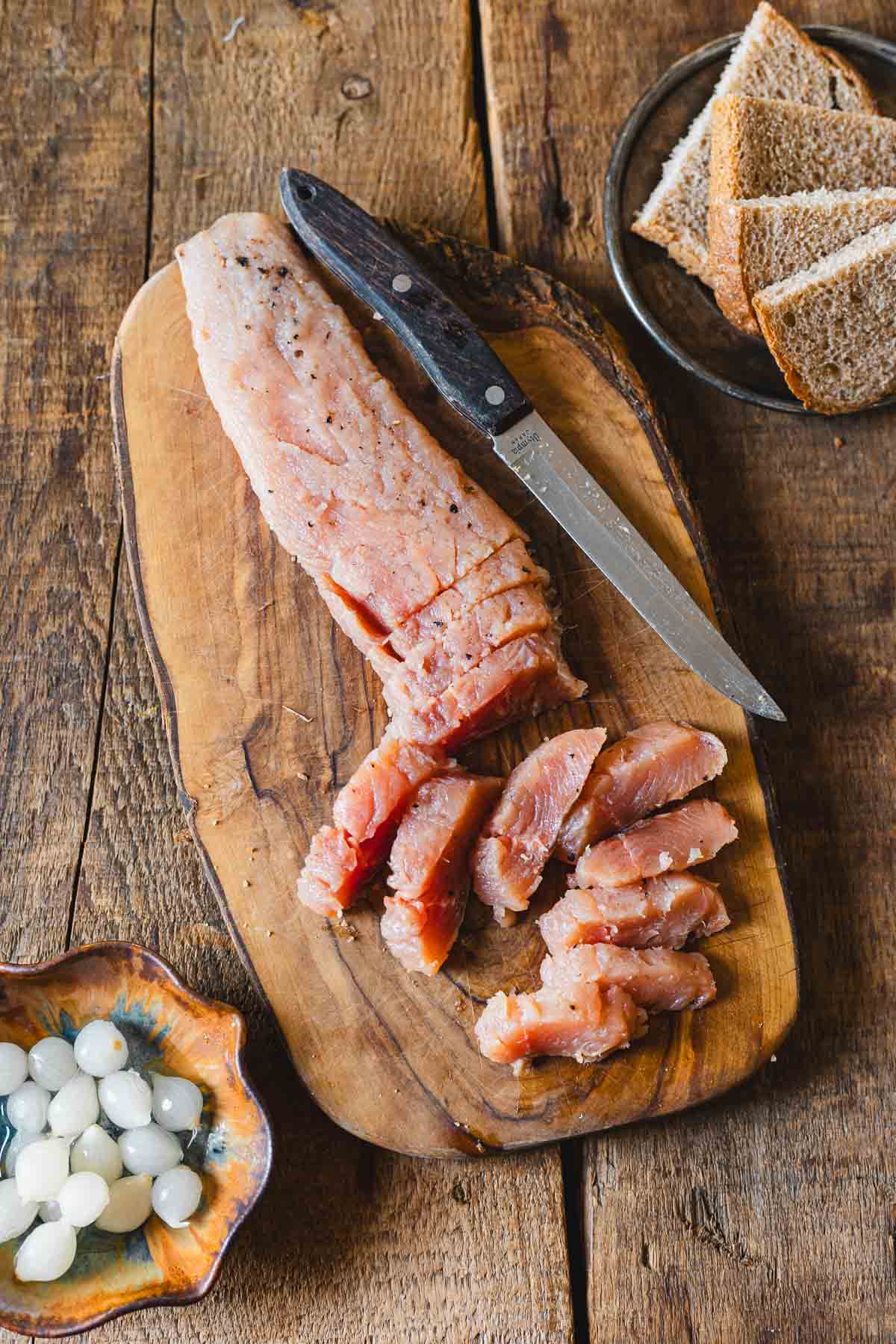
Layer onto fresh matzo, pair with horseradish or a squeeze of lemon, or enjoy it just as it is.
Storage
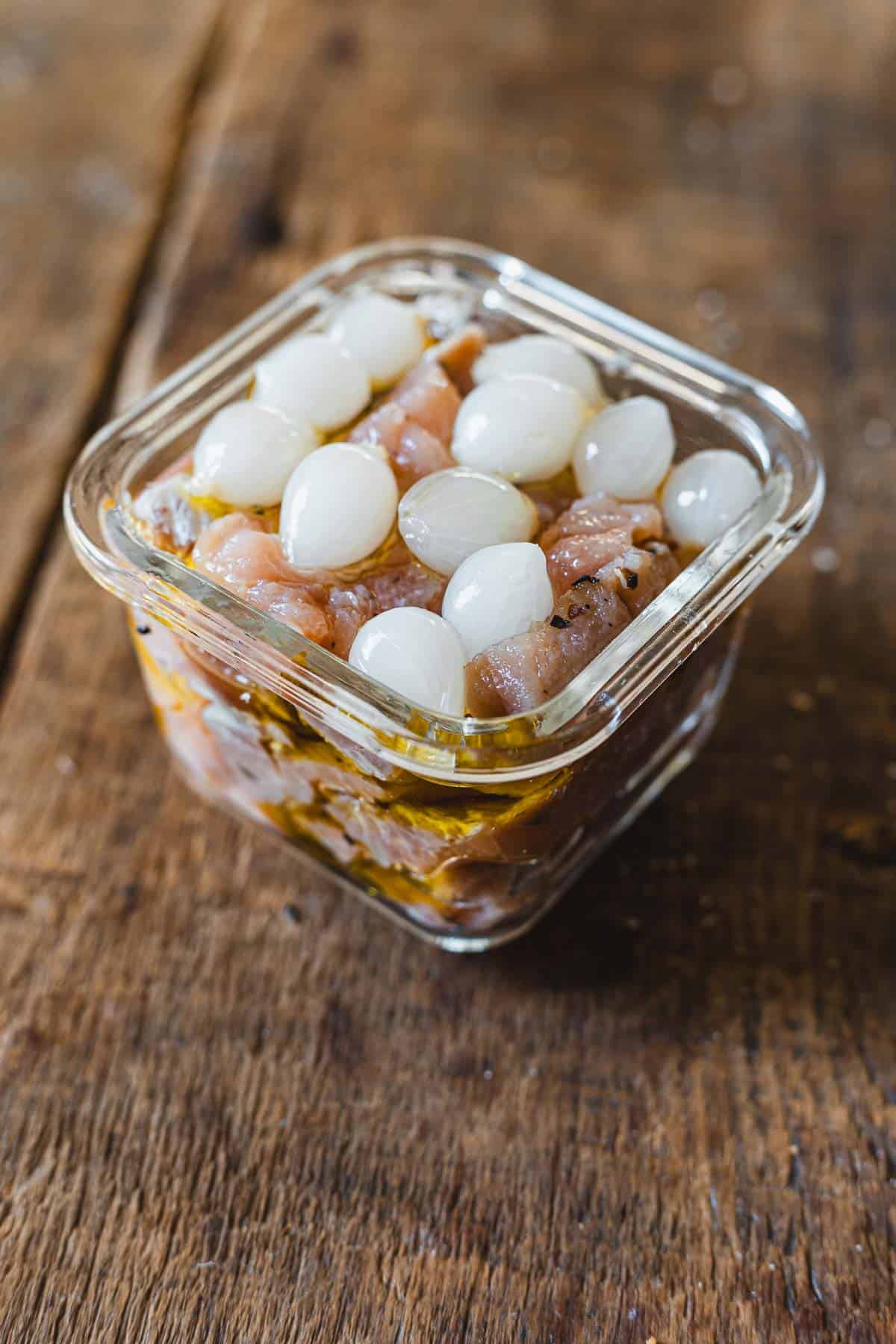
Once the salmon is cured and thinly sliced, any leftovers can be tucked away in an airtight container and kept in the refrigerator for up to three days. My grandmother always wrapped hers in parchment first, saying it helped the flavors settle in just right.
For longer storage, you can freeze the cured salmon, tightly wrapped, for up to a month. Just let it defrost slowly in the fridge overnight.
Top Tips
Press, Don’t Crush – weighing down the salmon helps it cure evenly, but too much weight can force out too much moisture, leaving it dry instead of silky. A small plate or a light pan does the trick—just enough pressure to help the salt do its job without overwhelming the fish.
Don’t Skimp on the Cure – it might feel like a lot of salt, but trust the process. The salt draws out moisture, firms up the texture, and deepens the flavor. My grandmother never measured, she just knew by sight, but if you’re new to curing, stick to the ratios and resist the urge to rinse too soon.
What to Serve With This Russian Gravlax Recipe
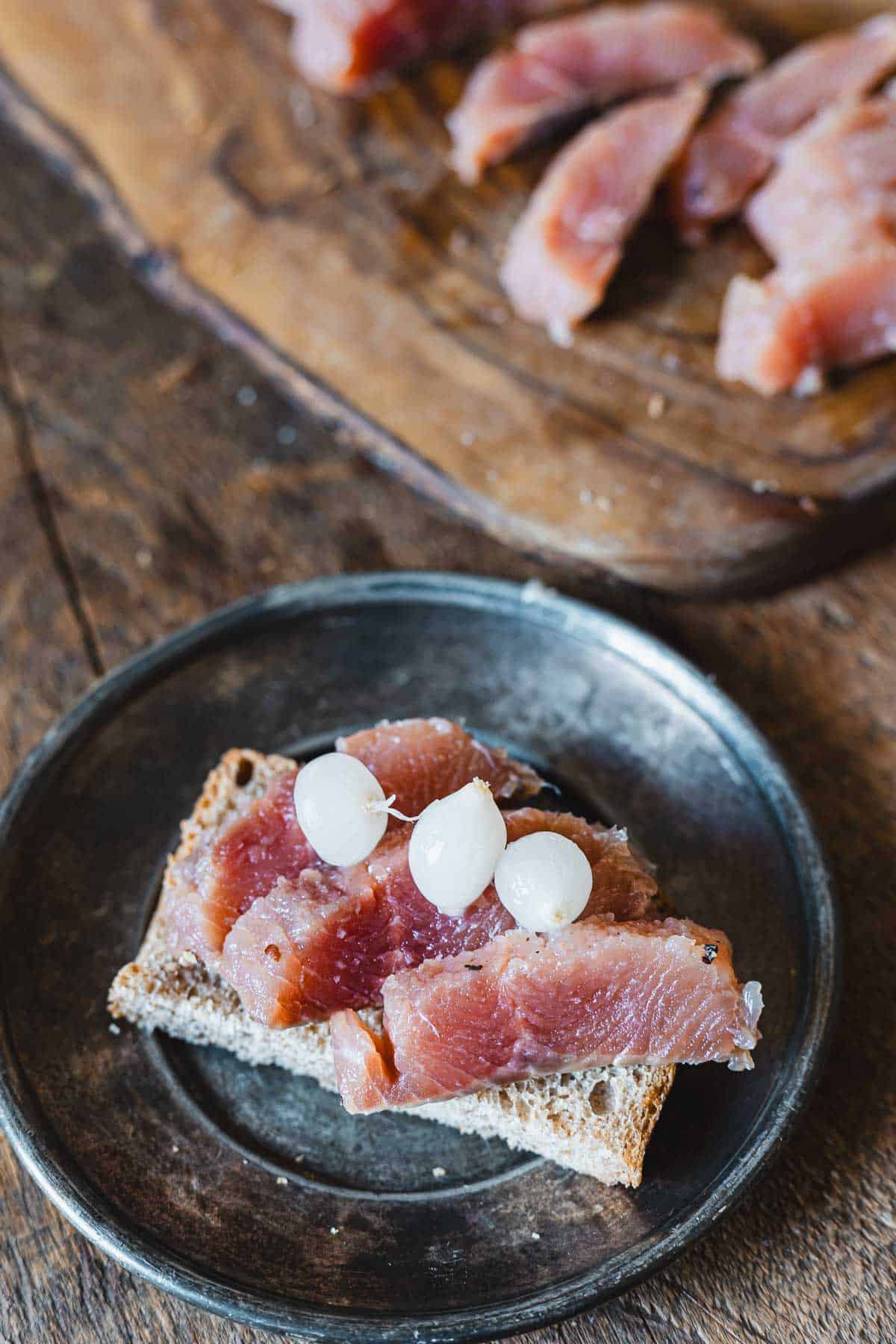
This cured salmon is the kind of dish that quietly finds its way into every meal during Passover. For something sweet and deeply nostalgic, pair it with my Grandma’s Russian Jewish Carrot Tzimmes. The tender, honey-glazed carrots balance the salmon’s saltiness beautifully, a reminder that Passover is as much about contrast as it is about tradition.
On slow, sleepy mornings, there was always matzo brei, sometimes savory, sometimes sweet, depending on my grandmother’s mood. A simple, eggy fried matzo like my Classic Matzo Brei makes a wonderful backdrop for thin slices of cured salmon, while the Sweet Matzo Brei with cinnamon and fruit brings out the fish’s delicate richness in a way that always surprises me.
And when we wanted something crisp and bright, there was always a salad on the table. My Little Gem Salad, with its fresh herbs, lemony bite, and just a touch of sweetness, makes a perfect counterpoint to the salmon’s buttery texture.
Recipe
Tried and loved this recipe? Please leave a 5-star review below! Your reviews mean a lot to me, so if you've got any questions, please let me know in a comment.
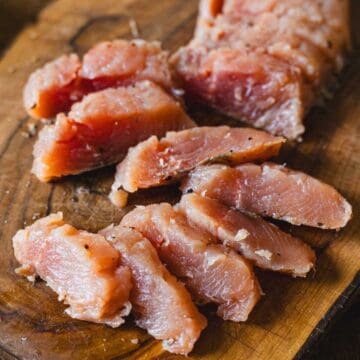
Russian Cured Salmon (Grandma's Recipe)
Equipment
- Sharp Knife
Ingredients
- 1 lb salmon fillet skinless, boneless
- 3 tablespoon rock salt
- 1 tablespoon sugar
- 2 bay leaves crushed
- 1 teaspoon whole peppercorns lightly crushed
Instructions
- In a small bowl, mix together the salt, sugar, crushed bay leaves, and lightly crushed peppercorns. This will help draw out moisture and infuse flavor into the salmon.
- Lay a large piece of cheesecloth over a baking sheet. This will help the fish breathe as it cures and make it easier to wrap.
- Place the salmon fillet skin-side down on the cheesecloth. Evenly rub the salt mixture all over the fish, pressing gently to ensure full coverage.
- Fold the cheesecloth tightly around the salmon to create a snug package. Place a small weight on top, like a plate or can, to help press out moisture evenly.
- Transfer the wrapped salmon to the fridge and let it cure for 48 hours. Every 12 hours, check for any liquid and carefully drain it off.
- After 48 hours, unwrap the salmon and rinse it under cold water to remove excess salt. Pat it dry with paper towels.
- Use a sharp knife to slice the cured salmon thinly at an angle. Serve and enjoy.


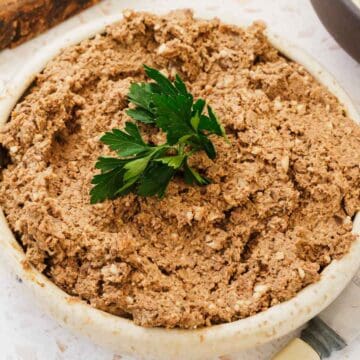


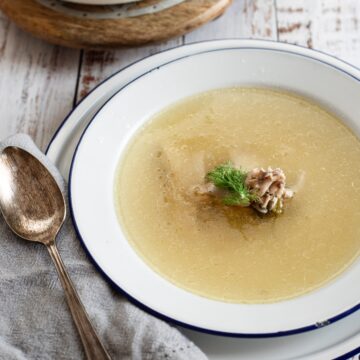
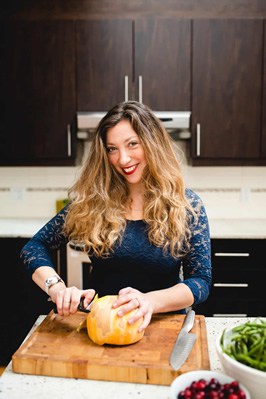
Tell Me What You Think!